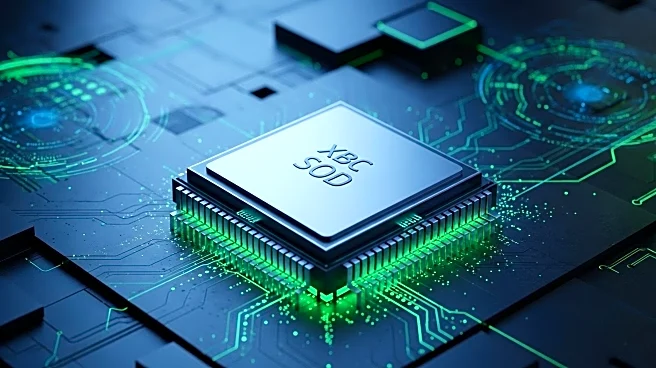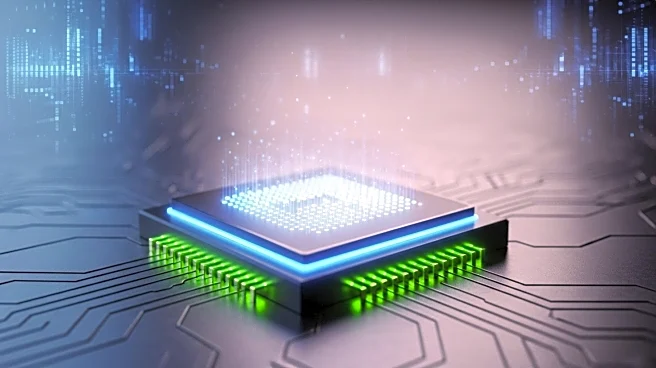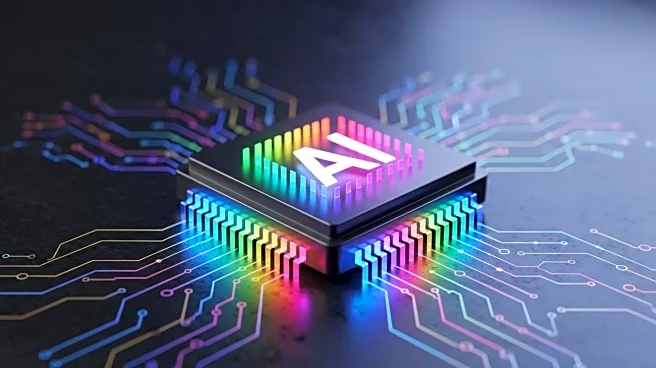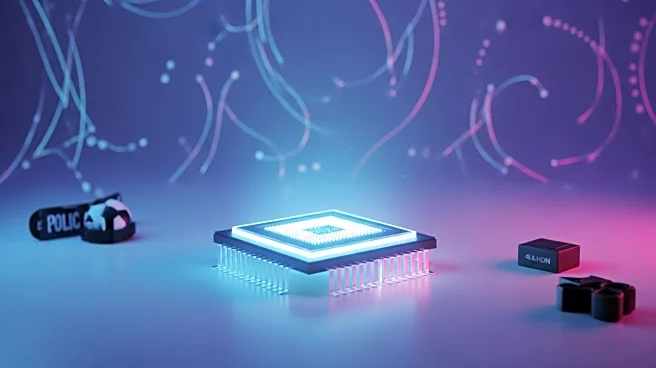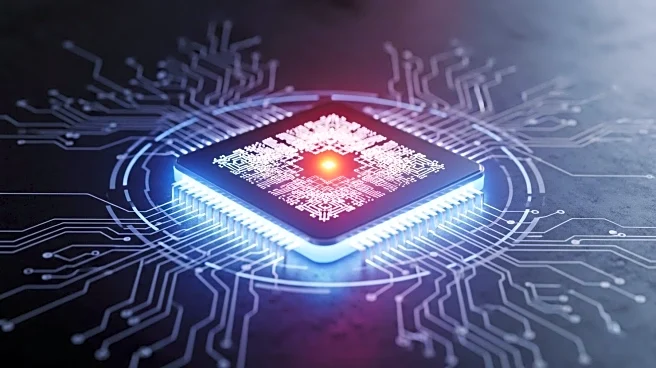What's Happening?
Intel has unveiled details about its upcoming processor lineup, the Intel Core Ultra Series 3, codenamed Panther Lake, along with its next-generation Xe3 graphics architecture. The new processors are expected to feature up to 16 performance and efficiency cores, offering over 50% higher CPU performance compared to previous generations. The Xe3 graphics architecture promises more than 50% better performance than its predecessor, Lunar Lake GPUs, with enhancements such as increased cache, more threads, improved ray tracing units, and larger vector engines. Additionally, Intel introduced XeSS 3, an AI upscaling technology similar to Nvidia's DLSS, capable of boosting frame rates by up to four times. In a significant development, Intel announced a partnership with Nvidia to develop and sell x86 system-on-chips (SoCs) for personal computers, incorporating Nvidia RTX GPU chiplets. The collaboration extends to custom x86 CPUs for data centers, which Nvidia plans to utilize for its AI infrastructure platforms.
Why It's Important?
The collaboration between Intel and Nvidia marks a significant advancement in the AI and computing sectors, potentially reshaping the landscape of personal computing and data center operations. By integrating Nvidia's RTX GPU technology into Intel's x86 SoCs, the partnership aims to enhance the performance and efficiency of AI tasks, benefiting industries reliant on high-performance computing. This move could accelerate the adoption of AI technologies across various sectors, including healthcare, finance, and autonomous systems, by providing more powerful and efficient processing capabilities. The introduction of Intel's XeSS 3 technology further underscores the competitive dynamics in the AI upscaling market, challenging Nvidia's DLSS and potentially driving innovation in graphics performance.
What's Next?
The partnership between Intel and Nvidia is expected to lead to the development of new products that leverage the strengths of both companies, potentially resulting in more efficient and powerful computing solutions. As these technologies are integrated into personal computers and data centers, stakeholders such as tech companies, AI developers, and businesses relying on data processing may experience enhanced capabilities and performance. The collaboration could also prompt other industry players to pursue similar partnerships or innovations to remain competitive. Additionally, the advancements in AI upscaling technology may influence the gaming and entertainment industries, offering improved graphics and performance for end-users.
Beyond the Headlines
The collaboration between Intel and Nvidia may have broader implications for the tech industry, including potential shifts in market dynamics and competitive strategies. As these companies combine their expertise, they may set new standards for performance and efficiency in computing, influencing future product development and industry benchmarks. The partnership could also impact the supply chain and manufacturing processes, as the integration of advanced technologies may require new approaches to production and distribution. Furthermore, the focus on AI infrastructure highlights the growing importance of AI in shaping technological advancements and driving economic growth.
